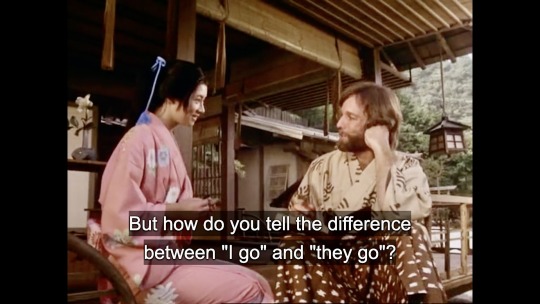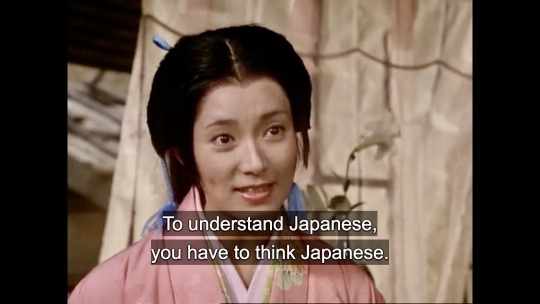#Japanese Lesson
Explore tagged Tumblr posts
Text
JLPT N5 - あげる
At its simplest, あげる means “to give”. At the N5 level, it’s used for giving physical things such as presents, money, water (to plants), food (to pets), etc. There is another way it can be used, but that is for a later JLPT level. For now, let’s get into ONE of the ways you can talk about giving in Japanese.
First, here is the vocabulary for this post.

【The Grammar of あげる】
Basically there are 4 parts to every あげる sentence that you should be thinking about. The first 3 are marked with particles and the last part is the verb.

Here is an example sentence:
① 【けんじは】【トムに】【腕時計を】あげた。
= As for Kenji, to Tom, a watch gave
= Kenji gave Tom a watch.
In a sentence like #1 it’s easy to see the 3 parts clearly marked with particles and then the verb at the end. Unfortunately you WILL NOT always see simple sentences like this, so let’s look at each part one by one, along with the cultural context behind あげる.
【The Giver】
Most of the time, the giver will be marked by the は (or sometimes the が) particle. This is because あげる sets up the action of giving from the giver’s perspective.
Sometimes, it is obvious who the giver is, so that phrase can be completely left out of the sentence.
② 【会社の人たちに】【お土産を】あげると思う。
= to the people at (my) company, souvenirs will give I think
= I think I’m going to give the people at my company souvenirs.
In this sentence it would be clear that the speaker is the giver. Therefore it’s not necessary to include a 私は phrase.
【The Relationship Between Giver and Receiver】
Before we move on, let’s get into a very big cultural difference between Japan and English-speaking cultures. When you use あげる, you have to think about the relationship between the giver and the receiver. In English, this doesn’t affect the words we use, but in Japanese it is actually very important when it comes to word choice. Take a look at this image:

The green circle would include close friends, family, your lover, etc. Pets and plants would also fall into this circle. Outside of the green circle are strangers, teachers, professors and depending on your job, your customers. This is because showing respect is directly connected to setting up a kind of psychological distance. You have to work hard and gain trust before you are moved into the green circle.
Some people, like coworkers and bosses, may be inside the green circle in some situations, but outside of it in other situations! A common example is when you go out drinking with coworkers. As the alcohol flows throughout the night you’ll notice that psychological space slowly disappearing - that is until the next day at work. They might act like the person you drank with was a COMPLETELY different person!
This way of thinking is called うちそと, and can be a very difficult part of Japanese culture for many foreigners. Here’s the thing: the culture of うちそと extends to the concept of giving as well.
【Giving Culture and あげる】
When it comes to giving, there are 4 situations where it’s appropriate to use the verb あげる:
① When you give something to someone inside your inner circle
② When you give something to anyone outside your inner circle
③ When someone in your inner circle gives something to someone outside your inner circle
④ When someone outside your inner circle gives something to another person outside your inner circle
Numbers 1-3 can be described as the act of giving while moving from a smaller circle to a bigger circle. Number 4 can be described as giving that doesn’t happen in your inner circle.

There are of course more possibilities when it comes to giving (and receiving). However, those situations won’t use the verb あげる!
【What Is Being Given】
In most sentences, whatever is being given is very simply marked with the を particle. However, there are times when the を particle or the positioning of what is being given will change. Take a look at these three example sentences:

Example 3a is the “default version”. The doll is marked with the を particle so we immediately know that it will be given to someone (the section manager’s wife).
For example 3b I want you to imagine that you are in a souvenir shop. You’ve bought a couple of things already, but you haven‘t decided which gifts will go to whom. All of a sudden, you see a doll that catches your eye. You immediately think to yourself, “that doll is perfect for the section manager’s wife”. Putting the item being given (that is, the doll) at the head of the sentence shows that 1) you are putting the focus of your sentence on that item and 2) there is a kind of impulsiveness to the giving. It’s kind of an instant decision.
Compare that with example 3c. Now I want you to imagine that you are in your house. You bought a bunch of dolls but you haven’t decided which one will go to whom. You pick up one of them and after some thought you say, “Ok I’ll give THIS one to the section manager’s wife.” Marking the doll with は serves to emphasize that there are several dolls, but you are highlighting one of them for a specific reason. It also shows that it WAS NOT an instant decision; some thought went into your decision.
This kind of distinction takes a really long time to understand and really “feel” but I hope that by explaining it to you now, it might stay with you somewhere deep inside your mind. You might even experiment with using sentences like 3b and 3c and surprise your Japanese friends!
【Alternative Verbs】
Lastly, let’s talk about your choice of verbs. You can actually adjust the level of “closeness” that the reader / listener feels by changing the verb that you use! あげる, あげた, あげます, あげました, etc. is used for a “default” level of closeness.
However, if the receiver is someone in a higher social position (for example a professor, a doctor, a boss, a politician, etc.) you would instead use the similar verb さしあげる. This verb actually serves to humble yourself - and thus elevates the listener / reader.
④ 【この本は】ただでさしあげます。
= as for this book, for nothing will give
= I will give you this book for free.
From this sentence you can tell that the giver and the receiver are on different levels, socially. (This is a little different than うちそと.) The listener will feel an elevated level respect simply by hearing the さしあげる verb.
On the other hand, if the receiver is someone VERY close to you, you can show that closeness by using the verb やる instead of あげる. やる is often used with pets and plants.
⑤ 【彼女は】【犬に】【えさを】やるのを忘れた。
= as for her, to (her) dog food giving forgot
= She forgot to give her dog food.
As it turns out, this is why I keep on saying “what is given” instead of “a present” or “a gift”. Giving water to plants or food to pets is not a present or a gift.
Here is a visual representation of the 3 different verbs that you can use when talking about giving (from the giver’s perspective):

Here is 1 last example:

= as for apples I give to you, there are none
= I don’t have any apples to give you.
As you can see in #6, it’s possible to state a giver, a receiver and then あげる in order to describe what is being given. Once you do that, you will then have a topic which you can then go on to make a comment about!
【Conclusion】
So there you have it! あげる and its related verbs (さしあげる and やる) all express the idea of giving from the giver’s perspective. However, you have to keep the Japanese concept of うちそと in mind. Later we’ll talk about giving but from the receiver’s perspective. Stay tuned!
Rice & Peace!
-AL (アル)
👋🏾
#日本語#japanese studyblr#japanese grammar#japanese language#isshonihongo#japanese culture#あげる#jlptn5#jlpt#japanese#learn japanese#japanese lesson#japanese study#studying japanese#japaneselessons#learnjapanese#japanese langblr#japanese vocab#japanese vocabulary#language#languages#language study#language studyblr#language blr#日本語の勉強#にほんご
155 notes
·
View notes
Text
I will warn you: this post gets pretty deep into the weeds talking about the copula and how it is constructed; if you don’t need to understand something in extreme depth to feel satisfied, this post probably won’t be for you. But if you’re like me and feel things click and become more intuitive when you really deeply understand how it all goes together like a puzzle, hopefully this will help you! If you’re interested in super technical linguistic-y stuff, you’ll probably enjoy this.
#japanese#japanese grammar#japanese lesson#japanese linguistics#japanese parts of speech#japanese study#langblr#language#language learning#learn japanese#linguistics#original post#studying
25 notes
·
View notes
Text
Today in why not to trust Google Translate when it comes to Japanese articles:

Its AI somehow "hallucinated" female genitals due to the association of oshikatsu with sex work. It's not rare for machine translations to be affected by overseas mistranslations and stereotypes, so it also happened to an acquaintance that an article about black communities in Japan (黒人系日本人) decided to suddenly become about "black fashion" solely because of the common overseas misconception that "kei=style" when it's also the middle term for ethnic groups.
46 notes
·
View notes
Text
[Japanese→English] @smallplasticgoose Japanese Duck Idiom — Color Coded Translation
Link to original post

⎯⎯⎯⎯⎯⎯⎯⎯⎯⎯⎯⎯⎯⎯⎯⎯⎯⎯⎯⎯⎯⎯
鴨が葱を背負って来る
かもがねぎをしょってくる
A duck comes carrying leeks on its back
This is an idiom equivalent to “Along comes a fool begging to be departed from his money.”
⎯⎯⎯⎯⎯⎯⎯⎯⎯⎯⎯⎯⎯⎯⎯⎯⎯⎯⎯⎯⎯⎯
Please correct me if I made a mistake
#color coded translation#japanese to english#japanese#japanese language#study japanese#japanese lesson#japanese vocab#japanese learning#learn japanese#learning japanese#japanese culture#日本語#日本語勉強中#日本語の練習#日本語の勉強#日本語勉強#japanese vocab list#japanese vocabulary
13 notes
·
View notes
Text











Shogun (1980)
Learning Japanese by the seaside with a pretty teacher. Sign me up. 😆
#shogun#shogun 1980#richard chamberlain#yoko shimada#japan#japanese language#learn japanese#japanese lesson
362 notes
·
View notes
Text
I need to save this

I always forget how to write it in English...
5 notes
·
View notes
Text
any one know how to learn Japanese in own time? Through refutable sources? Online preferred, have busy schedule.
13 notes
·
View notes
Text
Learn Japanese through Shoujo Manga: 失礼 / しつれい / Shitsurei
Let’s take a look at how to use this word in a sentence! Example Sentences First, let’s look at what the boy in our example picture is saying! First, let’s make a word bank! EnglishHiraganaKanjiRomaji (reading)Excuse meしつれいします失礼しますShitsurei shimasuSerinumaせりぬま芹沼SerinumaUpperclass menせんぱい先輩Senpai Now, let’s write out what he said in romaji!: “Shitsurei shimasu. Serinuma-senpai.” Let’s change…
2 notes
·
View notes
Text
Japanese Lesson 1.1
Basic Words
Here is a list of words in Japanese. They're all very basic words you will hear all the time.
Good - いい - ii
Bad - ダメ - dame
Yes - はい - hai
No - いいえ - iie
Hello - こんにちは - konnichiwa
Goodbye - さようなら - sayounara
This - これ - kore
That - それ - sore
Thank you - ありがとう - arigatou
I (formal) - わたし - watashi
The next lesson focuses more on pronounciation
2 notes
·
View notes
Text
Someone tell me why I get so discouraged every time I test myself on my Japanese goi or kanji and end up getting a score lower than last time... Also WHY am I getting a lower score Shouldn't I be improving at this point? I'm trying i swear :( I'm supposed to give the N2 exam this December while I'm getting low points solving N3 stuff I am very fucked😮💨 yesterday I told my friend 'ちょっとだけ自信持って阿呆' but I don't do that to myself what type of hypocrisy- T-T
3 notes
·
View notes
Text
Quando mi chiedono: "Sai il giapponese?" 😅
#ilovejapan
#japanese language#japanese lesson#japanese learning#japanese#giappone#japanese song#i love japan#metal#lezioni di giapponese#giapponese
4 notes
·
View notes
Text
JLPT N5 - している [Part 2]
Hey everyone, welcome to Part 2 of talking about している. This N5 grammar point is very basic but also very important. Let’s get into it shall we!
But first, here is your vocabulary:

【English Helping Verbs】
As I mentioned in Part 1, the “して“ in している can stand for any verb in て form. Sometimes it is actually する, but most times it will be some other verb.
Ok great, but what is the いる part?? Take a look at the following English sentences:
① Traffic accidents often occur here.
② I am eating.
③ The window is open.
Two of these sentences have both a helping verb and a main verb. In #1, there is only a main verb, which is “occur”. In #2 the main verb is “eating” and the helping verb is “am”. In #3 the main verb is “open” and the helping verb is “is”. Notice that one of the main verbs has the -ing suffix while the other two don’t. Make a mental note of this for later. 😉
【The いる in している】
Japanese also has helping verbs. Allow me to introduce you to one of the most common ones: いる!
The いる helping verb* adds nuance to the main verb. But here’s the thing - there are different versions of いる!In the している Part 1 article, you actually saw what I call the いる of Repetition. This いる does not translate to the -ing form of our verbs in English. If you see よく起きている for example, you should think “often occur(s)”. This is similar to example #1 above.
Examples #2 and 3 are not actions of repetition. For them, we need the other いる, which I call the いる of State or Condition. This いる sometimes makes us use that -ing suffix in our English translations. So if you just see 食べている, by default it would mean “started eating and then stayed in that state for some period of time”. Instead of all that, in English we would simply say “is eating”. This is similar to example #2 above.
開く is a different type of verb than 食べる**. Because of this, the いる of State or Condition does not lead to us using the -ing form. In this case, something is open and stays in that state for some period of time. We don’t say “is opening”. Instead we just say “is open”. For verbs like 開く, their English translations won’t use that -ing form. Instead they will be like example #3 above.
The key to the している grammar point is understanding what kind of main verb you have, and then which helping verb いる you are reading/hearing!
【いる of State or Condition】
Here are some examples where the helping verb いる expresses a state or condition.

This is how you say example #3 in Japanese.

= Tom is currently in the Philippines.
Interestingly, you could also say the following:
⑥ トムはフィリピンに来ています。***
⑦ トムはフィリピンにいます。
#5, 6 and 7 all say that Tom is in the Philippines but the nuance is different in each of them!
#5 says that Tom went to the Philippines and stayed there. This means that the speaker is NOT in the Philippines. On the other hand, #6 says that Tom came to the Philippines and then stayed there, meaning that the speaker is also there. #7 simply says that Tom is in the Philippines. We don’t have any information about where the speaker is located.

= Mizuki is wearing a white skirt and hat.
#8 has several things that I want to point out: First is that the て form of a verb can mark the end of a comment. Example 8 has two comments of equal value. This is one version of a Japanese compound sentence.
The second thing is that the ending helping verb can actually apply to TWO DIFFERENT main verbs! Native speakers hear #8 and understand the verbs to be both はいています as well as かぶっています.
The last thing is that verbs connected to clothes are very interesting. When you attach the helping verb いる, they can sometimes express the state of wearing something. However, in some contexts they can instead express the action of putting something on. For the N5 level luckily you won’t have to distinguish between wearing and putting on clothing so no worries. It is good to keep this tidbit in the back of your mind for the future though.
【Conclusion】
So there you have it. Now you know that the している grammar point can express several situations. You could have:
・Repetition - there will be a word/phrase that indicates that the action happens repeatedly. The English translation won’t use the -ing form of a verb
・State or a Condition - there MAY or may not be a word/phrase indicating repetition. The main thing to focus on is whether the verb is an action verb or not. This will help you decide if you need -ing or not.
As always, keep your eyes and ears open for different kinds of examples and try to notice patterns. You can do it!
Rice & Peace,
– AL
👋🏾
*I purposely say “the helping verb いる“because there is also the regular いる verb. It’s the same with the “be”, “do” and “have” verbs in English. “Am” in “I am a teacher” plays a different role than the one in “I am eating.”
** 食べる is a transitive verb while 開く is an intransitive verb. Usually transitive verbs will translate to -ing and intransitive verbs won’t. Of course there are exceptions so keep an open mind.
*** When choosing between 来ている、行っている、and いる think about where the speaker is located as well as if you want to stress the movement of the subject.
#japanese#japanese studyblr#japanese language#japanese grammar#日本語#isshonihongo#jlpt n5#jlptn5#jlpt#nihongo#japanese langblr#learn japanese#japanese lesson#japanese study#studying japanese#japaneselessons#learnjapanese#language#languages#language study#language studyblr#language blr#日本語の勉強#にほんご
63 notes
·
View notes
Text
I've created a masterlist of the Japanese lessons I've posted on my wordpress blog so far! Please feel free to check it out here, or feel free to use any of the following links to navigate to a certain lesson:
Reading and Writing Hiragana and Katakana
Reading and Writing Kanji
Parts of Speech in Japanese (Part One: Nouns, Verbs, Adjectives)
Parts of Speech in Japanese (Part Two: Adverbs, Counters, Postpositions, Conjunctions)
An Introduction to Particles
The Copula (です)
I'll do my best to remember to update this post, but the main link on my wordpress will definitely stay up to date as I post!
#original post#japanese#japanese language#learn japanese#japanese lesson#japanese grammar#japanese study#language learning#langblr#japanese langblr#japanese linguistics#learn kanji#learn to write japanese#hiragana#katakana#kanji#learn kana#japanese resources#study resources#learning resources
18 notes
·
View notes
Text
(* ˘⌣˘)◞🧋♥🧋ヽ(•‿• ) Whether your first encounter or reacquaintanceー ーdon't let your dreams become a missed opportunity!💖
-📚ー
📌𝐉𝐚𝐧𝐮𝐚𝐫𝐲 𝐉𝐚𝐩𝐚𝐧𝐞𝐬𝐞 𝐖𝐨𝐫𝐝 𝐨𝐟 𝐭𝐡𝐞 𝐖𝐞𝐞𝐤𝐝𝐚𝐲 𝐰//𝐐𝐔𝐈𝐙𝐁𝐎™ 【はじめまして、私の名前は○○です。】 ʀᴇᴀᴅ&ʟɪꜱᴛᴇɴ:
‐💬ー
👋(๑・ω・๑)[๑・▿・๑]👋(๑・ω・๑) Start (or continue) your Japanese language learning journey with:
💮 colour-coded explanations & example sentences 💮 audio pronunciations 💮 practice 💮 & more!
Remember, learning one thing today is still one more thing than you knew yesterday! Celebrate every step!
#japanese#japanese language#learn japanese#japan#kiki#koko#langblr#language#learnjapanese#langblog#new years resolution#audio dictionary#audio#japanese lesson#japanese vocabulary#japanese grammar
2 notes
·
View notes
Text
休憩
きゅうけい
Break; Intermission (of a film)
#japanese#japanese language#learn japanese#日本語#learning japanese#japanese vocab#japanese to english#english translation#japanese lesson#kanji#japanese kanji
8 notes
·
View notes
Text









Shogun (1980)
Learning Japanese be like... I'm as confused as he is. 🤣
#shogun#shogun 1980#richard chamberlain#yoko shimada#japan#japanese language#learn japanese#japanese lesson
67 notes
·
View notes